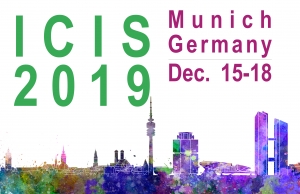Paper ID
1753
Paper Type
full
Description
An extensive penetration of digital technologies and a myriad of connected devices, people, and organizations have led to a world more interdependent than ever. Powerful companies such as Amazon, Facebook, Apple etc. exemplify the potential to harness widespread innovation from countless actors, including consumers and developers, via the power of digital technologies, emphasizing the notion of ‘Ecosystems’. Although the importance of these structures is obvious to the success of digital ventures, less is actively known about the development of established ecosystems in the era of digital innovation. Accordingly, we investigate the automotive ecosystem’s evolution by conducting a longitudinal study, spanning three time periods from 2002 to 2017. We illustrate the ecosystem’s development by visualizing the constituting companies and relations and assess key measures of network structure. By contrasting our empirical results with knowledge on biological ecosystem change, we derive implications for an IS specific ecosystem change theory.
Recommended Citation
Nischak, Fabian and Hanelt, André, "Ecosystem Change in the Era of Digital Innovation – A Longitudinal Analysis and Visualization of the Automotive Ecosystem" (2019). ICIS 2019 Proceedings. 5.
https://aisel.aisnet.org/icis2019/is_heart_of_innovation_ecosystems/innovation_ecosystems/5
Ecosystem Change in the Era of Digital Innovation – A Longitudinal Analysis and Visualization of the Automotive Ecosystem
An extensive penetration of digital technologies and a myriad of connected devices, people, and organizations have led to a world more interdependent than ever. Powerful companies such as Amazon, Facebook, Apple etc. exemplify the potential to harness widespread innovation from countless actors, including consumers and developers, via the power of digital technologies, emphasizing the notion of ‘Ecosystems’. Although the importance of these structures is obvious to the success of digital ventures, less is actively known about the development of established ecosystems in the era of digital innovation. Accordingly, we investigate the automotive ecosystem’s evolution by conducting a longitudinal study, spanning three time periods from 2002 to 2017. We illustrate the ecosystem’s development by visualizing the constituting companies and relations and assess key measures of network structure. By contrasting our empirical results with knowledge on biological ecosystem change, we derive implications for an IS specific ecosystem change theory.


